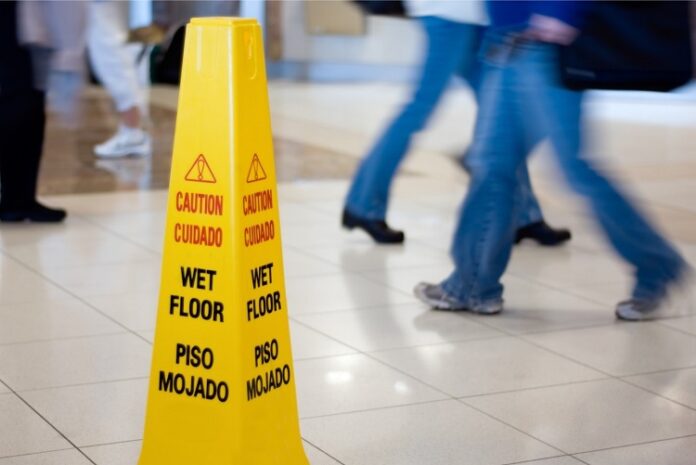How safe are your employees while they’re at work?
Many new business owners don’t consider the safety of their workplace, especially if the workplace is a traditionally “safe” environment (like an office). Did you know that workplace safety correlates directly with employee satisfaction and happiness?
But why is this true, and why should you care?
We’re here to talk about it. Keep reading to learn all about how workplace safety and employee satisfaction go hand-in-hand.
Why Employee Satisfaction Is Important
So why should employee happiness and satisfaction matter to you as a small business owner? After all, your first priority is your revenue, and as long as your employees are safe enough to continue working, what’s in it for you?
Your employees’ satisfaction levels are directly tied to their productivity. Happy employees are 13% more productive than unhappy employees. Better productivity turns into higher profits, so even if you’re only concerned with the money that your business is bringing in, the happiness of your employees should matter to you.
Employee happiness also correlates with employee retention. An employee who is happy is less likely to seek other job opportunities unless those opportunities are upward moves.
Employee retention is crucial. Did you know that hiring and onboarding new employees is far more expensive than retaining the ones that you have?
So with all of this in mind, how can employee health and safety impact their happiness and satisfaction?
Fewer Sick Days
Employees who are in safe environments are less likely to get sick or injured. As long as you keep your workplace sanitary, you should have fewer problems with the cold and flu going around (and you’ll be protecting your employees from the current COVID-19 pandemic).
If you don’t offer paid sick leave, your employees will be unhappy if they have to take off work. This can result in several things.
First, employees may choose not to call out of work at all, despite their illness. This may get other employees (or even customers) sick, worsening the morale all around the office.
If employees must take sick days, and they don’t receive pay, this may cause them to seek employment elsewhere (especially if they often get sick at work).
Employees Feel Safe
Employees want to feel safe at work.
Consider yourself as an employee. How would you feel if you thought that your workplace was a hazardous environment? Would you want to come to work, or would you try to avoid it as much as possible?
This is especially important when it comes to “dangerous” jobs involving heavy machinery, heights, or dangerous chemicals.
In these fields, employees can not afford to be scared. Fear may cause them to make mistakes. While a healthy amount of caution is necessary, legitimate fear is a hazard in and of itself.
Employees who don’t feel safe will seek employment elsewhere.
Employees Feel Valued
Even in an overall “safe” workplace (like an office), employees may not feel as though you value them if you aren’t paying attention to their health and safety.
You need your employees. They’re the heart and soul of your business, not cogs in a wheel. Placing more value on them (and treating them like they’re valuable) includes making sure that their environment is safe.
If you, as an employee, didn’t feel as though your employer valued you, would you stay with them? Would you feel satisfied with your position?
Less Overall Stress
Employees who feel unsafe may be on-edge. If they know that their workplace presents a hazard to them, they’ll be unwilling to focus on their work. This impacts your business and your customers.
Employees who feel stressed will also be more likely to fall ill, which returns us to the problem of sick days.
Enhancing Employee Safety and Wellness
So how can you make sure that your employees are safe, healthy, and satisfied?
As an employer, you should know that it’s a smart management decision to make changes around the workplace to enhance health and safety measures. These are a few ways that you can do that.
Routine Safety Training
Many employers only do safety training during the onboarding process (if that). Some employers who work in “safe” environments don’t do any type of safety training at all.
If this sounds familiar, you’re not setting yourself up for health and wellness success.
It’s best to do workplace safety training at least once per year, but doing so once per quarter is a good idea for employees who work in hazardous environments.
If a safety issue or mistake arises, take that as an opportunity to do a bonus training session.
Record Keeping and Reporting
Make sure that you encourage the reporting of hazards in the workplace. Let your employees know what constitutes a hazard, and create an easy way to let you know about it so you can assess the situation on your own.
You should also keep records, both of hazards and of the hazardous materials that your employees need to handle. Using a safety data sheet, like the one provided by Online SDS, will help.
Open Communication
Let your employees know that they’re able to come to you with any safety concerns without repercussions. Even if a safety concern seems trivial to you, it’s important for you to take it seriously if you want your employees to stay safe and happy.
You also need to stay flexible with those safety concerns. Be willing to make reasonable changes for your employees.
For example: if you have an employee that has to do a dangerous task, and they come to you saying they’re uncomfortable doing it alone, consider pairing them up with someone else so they can feel safer.
Workplace Safety Impacts Employee Satisfaction
You can’t separate workplace safety from employee satisfaction. Make sure that you’re prioritizing safety in the workplace. It benefits you, your business as a whole, and your employees.
Don’t your employees deserve to work in a safe environment?
For more helpful articles all about business and more, visit the rest of our site.











